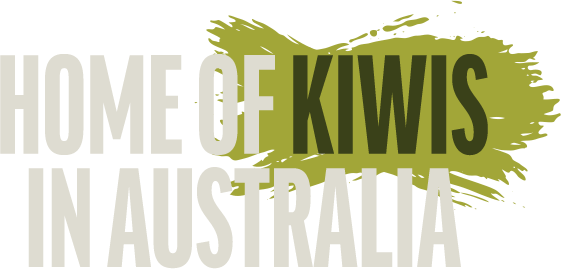
- Vehicle Insurance in Australia
- Buying a House in Australia – Lender’s Mortgage Insurance
- Worker’s Compensation in Australia
- Personal Items Insurance in Australia
- Scooter & Motorbike Insurance Australia
- Pet Insurance in Australia
- Consumer Credit Insurance – Insurance in Australia
- Life Insurance in Australia
- Insurance in Australia – Car Insurance Tips
- Home Insurance in Australia – Guide to Insurance in Australia
- Insurance in Australia – Insurance Basics
Vehicle Insurance in Australia
There are several types of car insurance available. You should consider your own circumstances, as well as local and national stats, in order to establish the level of insurance you should have for your car. Some interesting facts to consider are:
- Over 13 million passenger vehicles are on Australian roads.
- According to a recent survey conducted by NRMA Insurance, one in six drivers confess that they wouldn’t leave their details should they hit your car when you weren’t there.
- Nationally there were an average of 141 motor vehicle thefts per day in 2014/2015
- One in three vehicle fires attended by NSW fire authorities in 2013/14 were stolen vehicles.
- Around half of all collisions occurred in the afternoon between 12pm and 6pm.
- The most common day to have a collision is Friday.
In order to make it easier to understand the scope of cover that each insurance policy provides, we’ve divided them into the three levels.
Buying a House in Australia – Lender’s Mortgage Insurance
Lenders Mortgage Insurance (LMI) is insurance that a lender (such as a bank or financial institution) takes out to insure itself against the risk of not recovering the full loan balance should you, the borrower, be unable to meet your loan payments. The cost of LMI is usually passed on to the customer as part of your regular mortgage repayments. It is important to understand LMI covers the lender, not you (or any guarantor). LMI provides consumers with a benefit as it allows lenders to provide home loans to those who otherwise meet their lending requirements but who may still be rejected for a loan because they do not have a substantial deposit. About 20 per cent of all mortgages are insured with an LMI provider.
Worker’s Compensation in Australia
Workers’ compensation is a compulsory statutory form of insurance for all employers in every state and territory in Australia and provides protection to workers if they suffer a work-related injury or disease. Any business that employs or hires workers on a full-time, part-time or casual basis, under an oral or written contract of service or apprenticeship, must have workers compensation insurance that covers all workers.
Personal Items Insurance in Australia
You might decide to take out personal items insurance (also known as valuables insurance) if you own certain things that have a high individual value, such as a laptop, sporting equipment, camera, jewellery or art, and which may not be covered under a home and contents or travel insurance policies. Some of the options available under personal items insurance include the ability to cover items from accidental damage, loss or theft away from home. You can even choose to have those items covered separately when you travel nationally and internationally, as most travel insurance policies limit the amount claimed for any one item.
Often an insurer who offers contents insurance will also offer separate personal items insurance as an itemised add-on to the home contents policy.
Motorbike & Scooter Insurance
If you own a motorbike or scooter, you can find policies that can insure against loss of damage to your motorcycle and motorcycle apparel including bike leathers and helmets as well as damage to other vehicles and property and your liability. These are very similar to the types of insurance available to cars and other private motor vehicles.
- Mandatory motor vehicle accident personal injuries insurance is required by each state ad territory and is included in your motorbike or scooter registration cost. It is not an alternative to taking out a policy to cover your financial liabilities.
- Comprehensive – usually covers storm, flood and fire damage to your own bike, damage to your protective clothing, damage to other people’s property, as well as other risks, plus legal costs. It sometimes also covers accidental damage
- Third Party – covers damage to other people’s property and legal costs, but not damage to your own bike
- Third Party Fire and Theft– Third Party with some add-on features, often offered as an option, with cover up to a set limit.
Pet Insurance in Australia
Pet Insurance can help you pay for unexpected vet treatments. Some policies also offer cover for routine fare such as general checkups and everyday preventative care. Most pet insurance products are only for dogs and cats. Though pet insurance is quite a new product in Australia, consumers have a wide choice of policies and providers. The three main types of pet insurance policies are Accident-only, Accident and Illness, and Accident, Illness and Routine Treatment. Some pet insurance policies also include third-party cover for damage or injury that your pet might cause to other people of property and can also include cover for your pet going into a boarding kennel if you become sick and need hospital treatment.
You should carefully read the insurance policy to determine its suitability to you and your pet.
Consumer Credit Insurance – Insurance in Australia
Consumer credit insurance (CCI) covers you if something happens to you that affects your ability to meet your credit repayment. CCI covers your payments in the event of death, permanent disability or loss of income due to injury, illness or involuntary unemployment. CCI does not cover you if you resign from a position. Your CCI policy may pay the outstanding balance owed in a lump sum or cover your repayments for a period of time.
You may be offered CCI cover by your lender when it approves your credit, such as a credit card, personal loan or mortgage. Check that the lender’s product suits your needs – it is wise to get other quotes as you might find a CCI policy that suits you better through another insurer. Consumer credit insurance is not compulsory. If you are interested in buying it, work out if it offers you real value for money.
Life Insurance in Australia
Life insurance could help your family financially if you or your partner died or became seriously ill and couldn’t work. There are several types of insurance that fall under the broad heading of life insurance. Depending on your circumstances you may need one or more of these:
- Life cover – this is also known as term life insurance or death cover and pays a set amount of money when the person who is insured dies. The money will be paid to the people who are nominated in your policy as beneficiaries.
- Total and permanent disability (TPD) cover – this covers the costs of debt repayments, rehabilitation and the future cost of living if you are totally and permanently disabled. TPD is often bundled together with life cover.
- Trauma cover – this is also known as ‘critical illness’ cover or ‘recovery’ insurance and provides cover if you are diagnosed with a specified illness or injury. Trauma policies include the major illnesses or injuries that will make a significant impact on a person’s life, such as cancer or a stroke.
- Income Protection – this replaces the income lost through your inability to work and has been explained in a separate section above.
Insurance in Australia – Car Insurance Tips
- Compulsory Third Party, which you must have by law to register a car, does not cover youfor damage to your vehicle, other vehicles or property, or for liability in accidents
- Even very old cars should be insured with a Third Party Property or Third Party Fire and Theft policy. If you’re responsible for an accident, you could be liable for tens of thousands of dollars of damage to other cars or property
- Comprehensive car insurance provides the greatest peace of mind and often offers a range of additional benefits, either as inclusions or extras
- Tell your insurer if you modify your car, use your car for work, move house or need to add other drivers to the policy
- Safe drivers with good records usually pay cheaper premiums than higher-risk drivers
- You may be able to save on your premium by increasing your excess
- If your car is stolen you should report it to the police and your insurer immediately
Home Insurance in Australia
There are several different types of insurance you can purchase for your home that can offer some peace of mind.
Home Insurance (sometimes called Building Insurance)
Home insurance covers financial losses associated with damage or loss of a property you own. Home insurance (also called property or home building insurance) is essential if you own or are buying a home. This type of insurance suits home owners but is not suitable for tenants. Home/Building Insurance can cover you for damage to your house or apartment and legal liability. Your mortgage provider usually requires you to have it if you have a home loan.
There are many different types of home building insurance policies available to suit a wide range of living circumstances. It’s important to think about your specific risks– for instance, you may live in a flood or cyclone-prone area, or near fire-prone bushland – and find a policy that covers the risks you wish to insure. Most policies cover storms, cyclones and bushfires, but not all insurers offer flood insurance.
Contents Insurance
Contents insurance covers financial losses caused by the loss, theft or damage of your possessions. Contents insurance covers the financial cost of repairing or replacing your household personal possessions and furnishings, such as curtains, furniture, white goods, stereo, TV, computers and other electrical appliances, clothing, jewellery, sporting equipment and even toys.
Contents insurance is suitable for home owners and renters. Home owners can purchase it as a stand-alone product or buy it in combination with home insurance as a home contents policy. Renters can also purchase low-cost renter’s insurance policies.
If you are a renter or tenant, your possessions are not covered by your landlord’s insurance policies. This type of insurance suits both owner/occupiers (people who own their home and live in it) and tenants.
Home and Contents Insurance
This is a single policy that combines the features of both Home/Building Insurance and Contents Insurance. It is usually cheaper to buy a combined policy rather than purchasing the two individually and in the event of substantial property damage, such as a fire, having a combined policy could eliminate the need to pay two premiums when making a claim. This type of policy suits owner/occupiers but not tenants.
Renter’s or Tenant’s Insurance
This is a low-cost contents policy for tenants that provides limited cover for events such as fire and theft. It is suited to tenants but not home owners or owner/occupiers.
Insurance in Australia – Insurance Basics
To offer a brief explanation, when you take out an insurance policy in Australia, you pay a monthly or annual premium. A premium is the amount of money you pay to your insurance company for your insurance policy, in return for the insurance company’s promise to cover you if something that is covered by your policy goes wrong.
Excess
Most policies include an excess. The excess is the amount that you have to pay if you decide to make a claim on your policy. The amount of your excess is specified in your policy. Choosing a higher excess amount may help to bring down the cost of your insurance premium because the insurer won’t have to pay out as much in the event of a claim. For example, if you have an excess of $400 on your home contents insurance and your house is burgled, you would pay the first $400 to replace the stolen items and the insurer would pay the remainder.
Moving to Australia
- Accessing Financial Support in Australia: Guide for NZ Citizens
- Australian Driver Licence for New Zealand Citizens: Essential Information
- Australian Insurance Options for NZ Citizens: Explained
- Australian School Years For NZ Children: Essential Education Information
- Banking Options For Kiwis Living In Australia
- Births, Deaths, Marriages, and De Facto Relationships in Australia
- Childcare & Early Learning In Australia
- Community Services Australia: Resources for New Zealand Expats
- Connecting Electricity, Phone, and Internet in Australia
- Credit Checks in Australia: Will Your NZ Credit History Follow You To Australia
- Giving Birth in Australia: Advice for New Zealand Citizens
- Medicare, Bulk Billing, and Private Healthcare in Australia: Guide for NZ Expats
- Navigating Tax in Australia: Guidance for NZ Citizens
- Obtaining a Police Check in Australia for NZ Citizens
- Renting Advice NZ to Australia
- Responsible Service of Alcohol in Australia: A Guide for NZ Citizens
- Understanding Pension Eligibility for NZ Citizens in Australia
- Understanding the Australian Legal System for Kiwis
- What to Bring When Relocating to Australia: Must-Have Items
- Working With Children Check in Australia: Requirements





